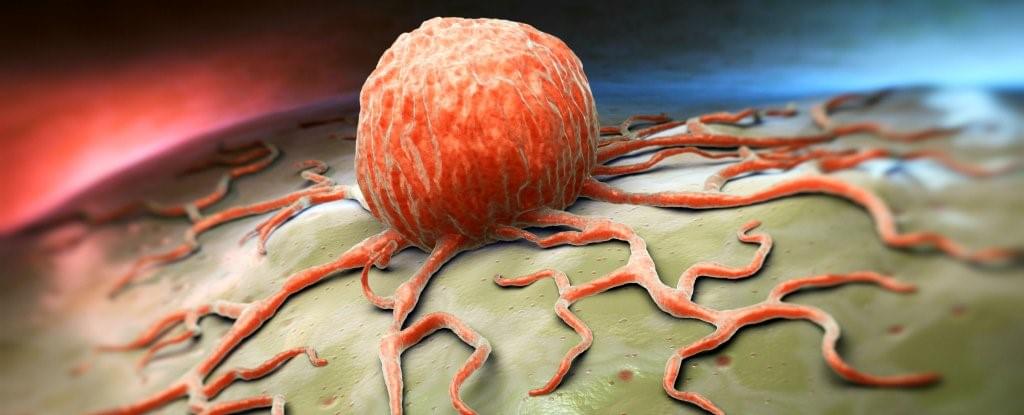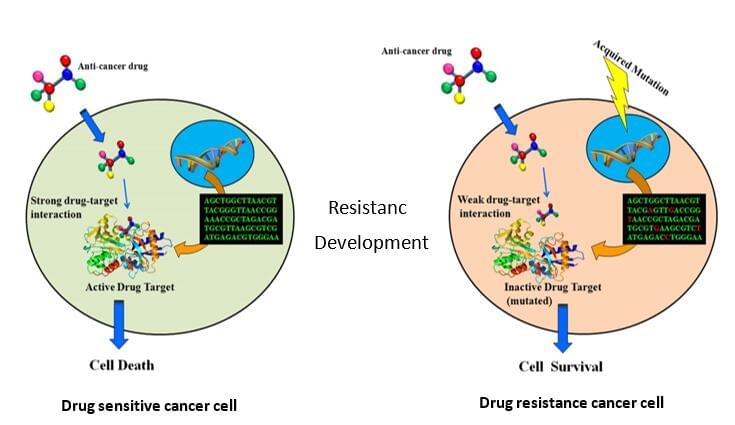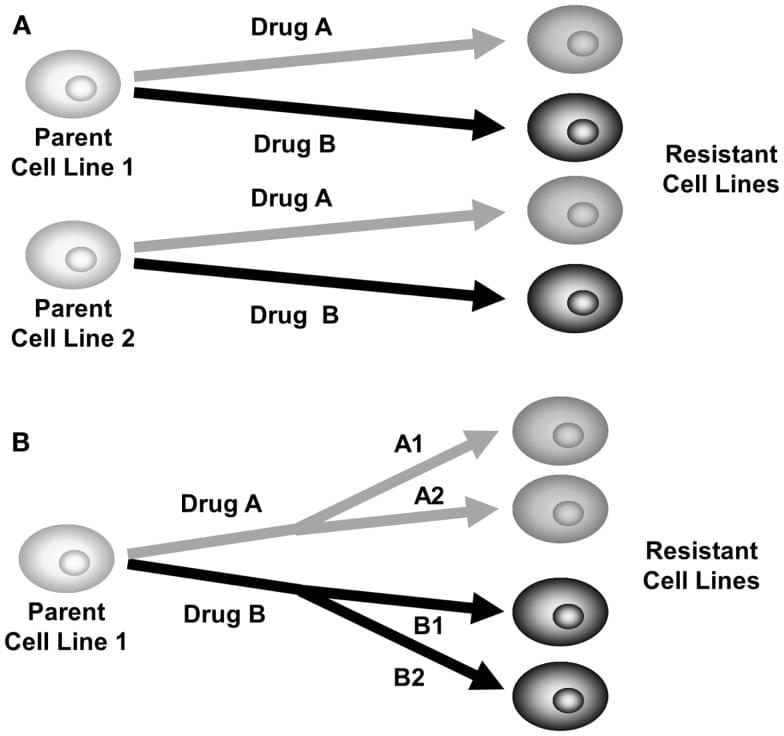- You are here: Home
- Services
- Cell Services
- Cell Line Testing and Assays
- Drug-Resistant Cell Model Generation Service
Services
-
Cell Services
- Cell Line Authentication
- Cell Surface Marker Validation Service
-
Cell Line Testing and Assays
- Toxicology Assay
- Drug-Resistant Cell Models
- Cell Viability Assays
- Cell Proliferation Assays
- Cell Migration Assays
- Soft Agar Colony Formation Assay Service
- SRB Assay
- Cell Apoptosis Assays
- Cell Cycle Assays
- Cell Angiogenesis Assays
- DNA/RNA Extraction
- Custom Cell & Tissue Lysate Service
- Cellular Phosphorylation Assays
- Stability Testing
- Sterility Testing
- Endotoxin Detection and Removal
- Phagocytosis Assays
- Cell-Based Screening and Profiling Services
- 3D-Based Services
- Custom Cell Services
- Cell-based LNP Evaluation
-
Stem Cell Research
- iPSC Generation
- iPSC Characterization
-
iPSC Differentiation
- Neural Stem Cells Differentiation Service from iPSC
- Astrocyte Differentiation Service from iPSC
- Retinal Pigment Epithelium (RPE) Differentiation Service from iPSC
- Cardiomyocyte Differentiation Service from iPSC
- T Cell, NK Cell Differentiation Service from iPSC
- Hepatocyte Differentiation Service from iPSC
- Beta Cell Differentiation Service from iPSC
- Brain Organoid Differentiation Service from iPSC
- Cardiac Organoid Differentiation Service from iPSC
- Kidney Organoid Differentiation Service from iPSC
- GABAnergic Neuron Differentiation Service from iPSC
- Undifferentiated iPSC Detection
- iPSC Gene Editing
- iPSC Expanding Service
- MSC Services
- Stem Cell Assay Development and Screening
- Cell Immortalization
-
ISH/FISH Services
- In Situ Hybridization (ISH) & RNAscope Service
- Fluorescent In Situ Hybridization
- FISH Probe Design, Synthesis and Testing Service
-
FISH Applications
- Multicolor FISH (M-FISH) Analysis
- Chromosome Analysis of ES and iPS Cells
- RNA FISH in Plant Service
- Mouse Model and PDX Analysis (FISH)
- Cell Transplantation Analysis (FISH)
- In Situ Detection of CAR-T Cells & Oncolytic Viruses
- CAR-T/CAR-NK Target Assessment Service (ISH)
- ImmunoFISH Analysis (FISH+IHC)
- Splice Variant Analysis (FISH)
- Telomere Length Analysis (Q-FISH)
- Telomere Length Analysis (qPCR assay)
- FISH Analysis of Microorganisms
- Neoplasms FISH Analysis
- CARD-FISH for Environmental Microorganisms (FISH)
- FISH Quality Control Services
- QuantiGene Plex Assay
- Circulating Tumor Cell (CTC) FISH
- mtRNA Analysis (FISH)
- In Situ Detection of Chemokines/Cytokines
- In Situ Detection of Virus
- Transgene Mapping (FISH)
- Transgene Mapping (Locus Amplification & Sequencing)
- Stable Cell Line Genetic Stability Testing
- Genetic Stability Testing (Locus Amplification & Sequencing + ddPCR)
- Clonality Analysis Service (FISH)
- Karyotyping (G-banded) Service
- Animal Chromosome Analysis (G-banded) Service
- I-FISH Service
- AAV Biodistribution Analysis (RNA ISH)
- Molecular Karyotyping (aCGH)
- Droplet Digital PCR (ddPCR) Service
- Digital ISH Image Quantification and Statistical Analysis
- SCE (Sister Chromatid Exchange) Analysis
- Biosample Services
- Histology Services
- Exosome Research Services
- In Vitro DMPK Services
-
In Vivo DMPK Services
- Pharmacokinetic and Toxicokinetic
- PK/PD Biomarker Analysis
- Bioavailability and Bioequivalence
- Bioanalytical Package
- Metabolite Profiling and Identification
- In Vivo Toxicity Study
- Mass Balance, Excretion and Expired Air Collection
- Administration Routes and Biofluid Sampling
- Quantitative Tissue Distribution
- Target Tissue Exposure
- In Vivo Blood-Brain-Barrier Assay
- Drug Toxicity Services
Drug-Resistant Cell Model Generation Service

Drug-resistant cell models are needed to investigate the mechanisms underlying drug resistance acquisition in cancer cells in order to develop hypotheses that can be tested by the use of clinical material. Researchers use drug-resistant cell models to mimic the conditions cancer patients experience during chemotherapy, and to understand potential mechanisms of resistance to chemotherapy agents. However, the reference regarding the methodology of the development process is little, and exploring a suitable selection strategy and finally generating stably drug-resistant cell model in house can be very time- and energy- consuming.

Creative Bioarray dedicates in assisting our customer in cancer drug researches and can offer our customers with readily growing sub-lines that show a clear resistance to the selection agent to accelerate their studies.
Creative Bioarray Drug-resistant cell model generation strategies

Drug-resistant cell models are developed in our laboratory by pulsed or repeatedly exposing cancer cells growing in cell culture to drugs. We choose suitable selection strategies such as pulsed selection strategy or continuous selection strategy based on the customer’s requirements on cell type, chemotherapy agents, resistance level and etc. The surviving daughter resistant cells are selected and compared to the parental sensitive cells using combination cell viability/proliferation assays, such as the MTT, acid phosphatase, or clonogenic assays.
Creative Advantages
- Clear and stable resistance to the selection agent
- Different types of Drug-resistant cell lines can be available
- High/ low level of the resistance can be optional
- Guaranteed quality
- Technical supports any time
Workflow

Quotations and ordering
Need finding a drug-resistant cell model? Our customer service representatives are available 24hr a day! We thank you for choosing Creative Bioarray at your preferred cell model source.
References
- Martina, M.; et al. In vitro development of chemotherapy and targeted therapy drug-resistant cancer cell lines: a practical guide with case studies. Front Oncol. 2014, 4: 40.
- Gonzalez-Angulo A.M.; et al. Overview of resistance to systemic therapy in patients with breast cancer. Adv Exp Med Biol. 2007, 608: 1-22.
Explore Other Options
For research use only. Not for any other purpose.

